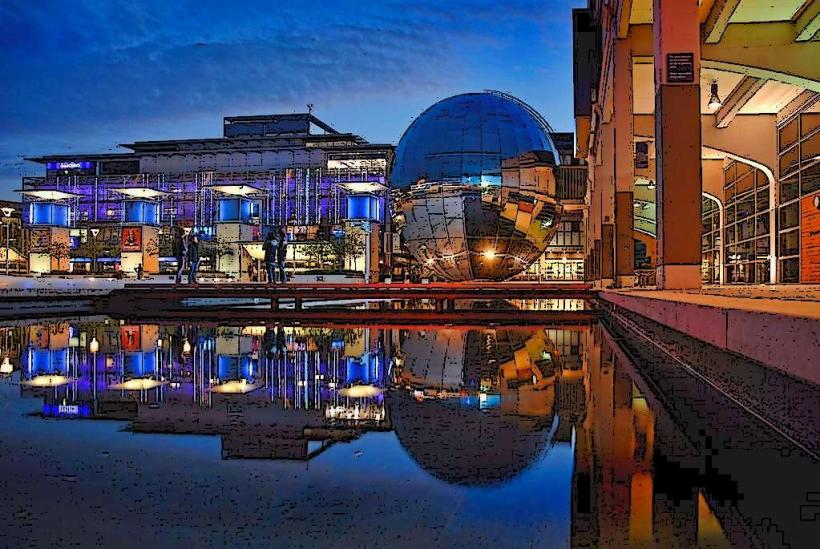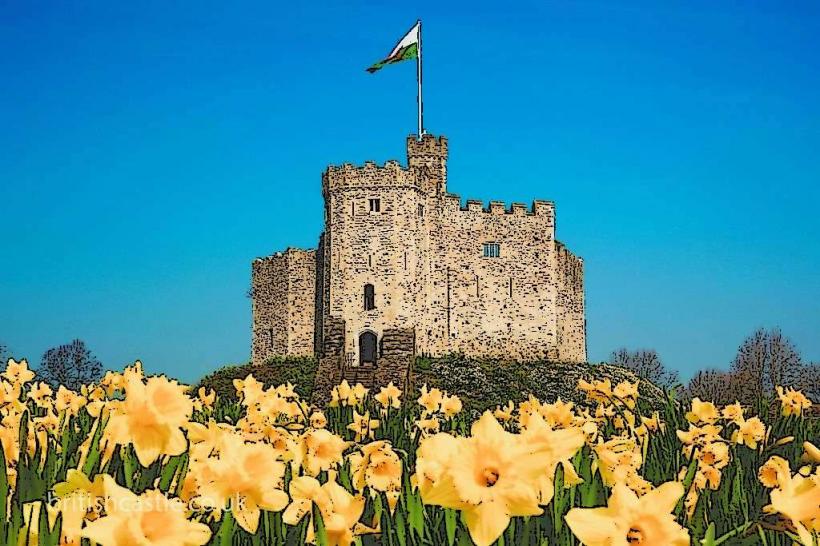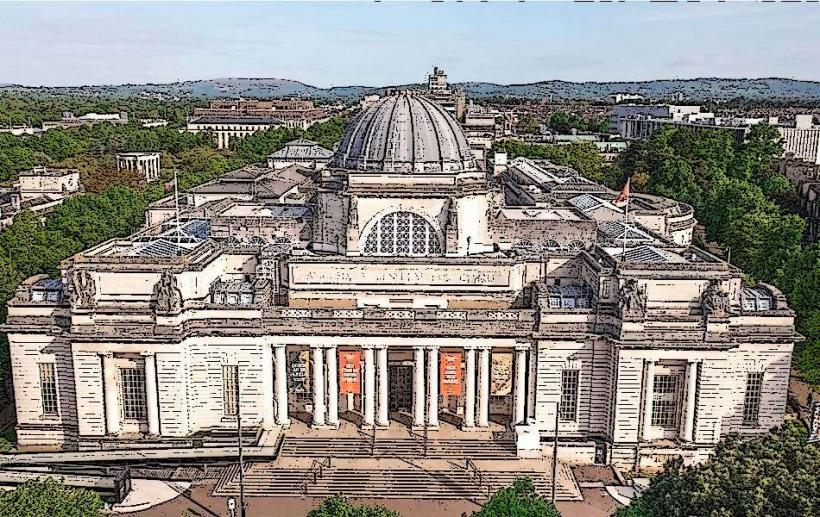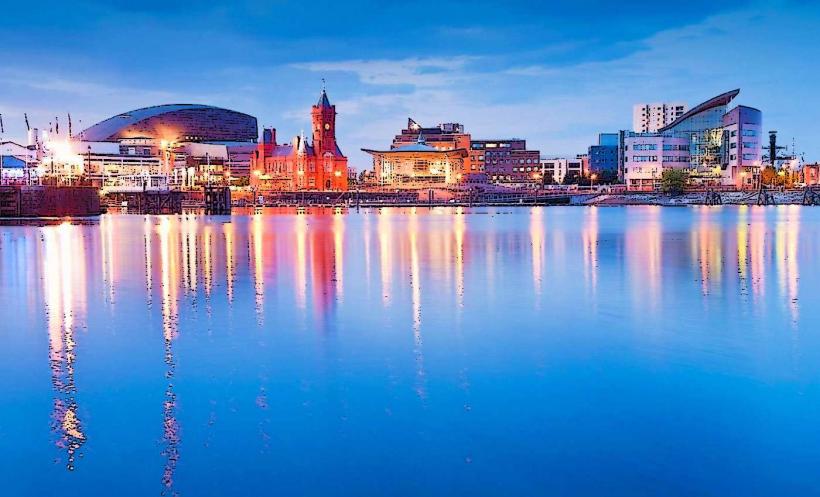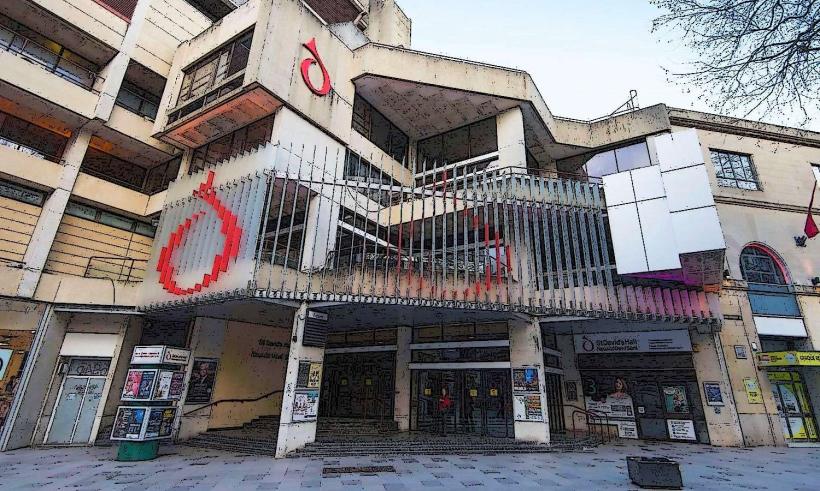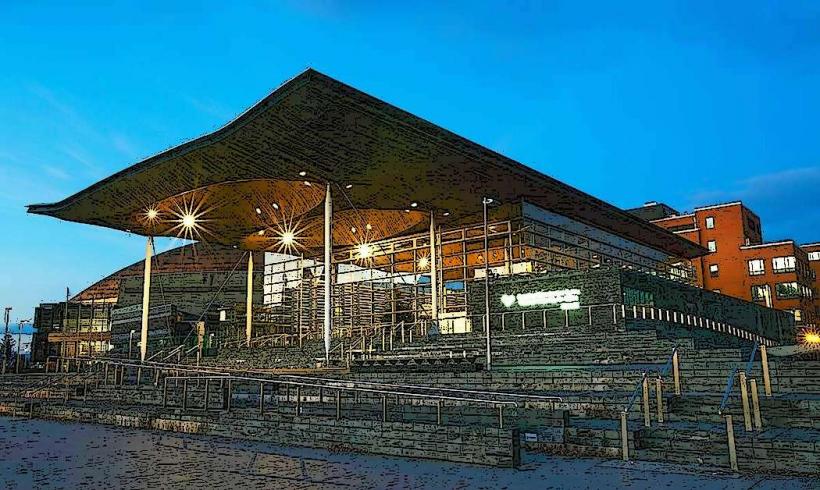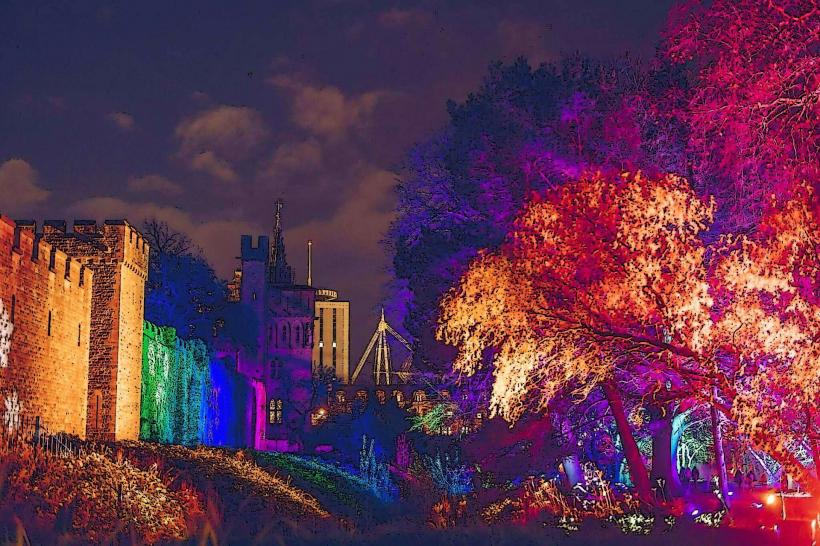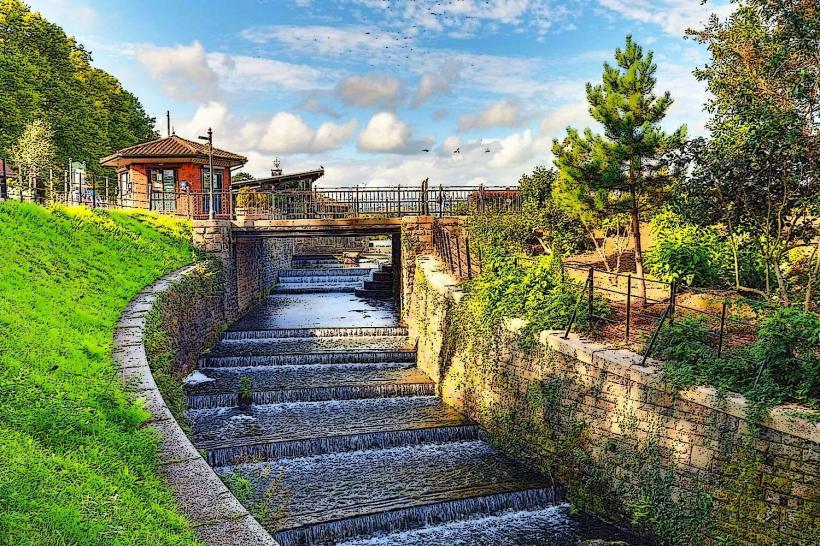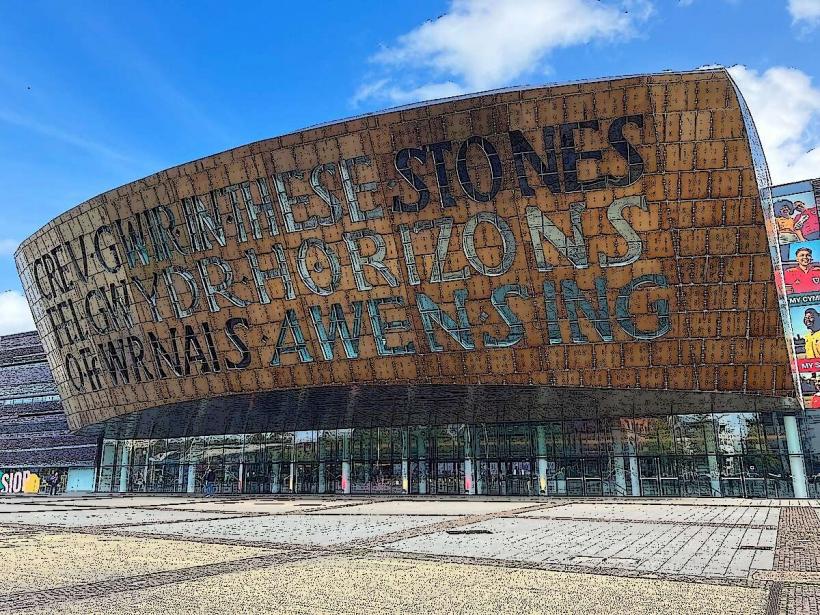Information
City: CardiffCountry: United Kingdom
Continent: Europe
Cardiff is the capital and largest city of Wales, located on the southern coast of the country, along the Bristol Channel. Known for its rich history, vibrant cultural scene, and modern development, Cardiff is a city that blends the old with the new. It’s also the center of political and economic life in Wales.
1. Geography and Location
- Location: Cardiff is situated in the south of Wales, about 150 miles (240 km) west of London. It is located on the Bristol Channel, which provides access to the Atlantic Ocean via the Severn Estuary.
- Climate: Cardiff experiences a temperate maritime climate, with mild winters and cool summers. Rainfall is frequent, but the city generally enjoys more sunshine compared to other parts of Wales.
2. History
- Roman and Medieval Cardiff: Cardiff's history dates back to Roman times, when it was established as a fort named Cardiff Castle. By the 12th century, it had become a significant medieval town, with Cardiff Castle being a symbol of its power and influence.
- Industrial Revolution: In the 19th century, Cardiff underwent significant growth due to the coal trade. It became one of the world's busiest ports, handling coal from the South Wales Valleys, and played a crucial role in the Industrial Revolution.
- 20th Century and Capital Status: Cardiff was officially designated as the capital of Wales in 1955. The city has since developed into a political, cultural, and economic hub, while still retaining its historic charm.
3. Landmarks and Attractions
Cardiff is home to many notable landmarks and cultural attractions.
- Cardiff Castle: One of the most famous landmarks in the city, Cardiff Castle is a historic site with Roman, Norman, and Victorian elements. The castle features beautiful interiors, including the Bute Suite, and its grounds are a great place to explore.
- Principality Stadium: Known previously as the Millennium Stadium, the Principality Stadium is one of the UK's premier sports venues. It is home to the Welsh rugby team and hosts concerts, events, and conferences. The stadium's retractable roof and iconic design make it a must-see attraction.
- Cardiff Bay: Cardiff Bay is a thriving waterfront area that includes attractions such as the Wales Millennium Centre, a venue for opera, theater, and dance, and the Senedd, the National Assembly for Wales building. The area has transformed from an industrial docklands into a popular area for dining, shopping, and entertainment.
- St. David’s Hall: Known for its world-class acoustics, St. David’s Hall is a major concert hall in Cardiff, hosting a range of performances from classical music to contemporary artists.
- Bute Park: Adjacent to Cardiff Castle, Bute Park is one of the largest urban parks in the UK. It offers a peaceful escape from the city and is home to several species of wildlife, along with picturesque walking paths and gardens.
- National Museum Cardiff: This museum is part of the National Museum Wales network and houses an impressive collection of fine art, natural history, and archaeology. It’s one of Cardiff's major cultural attractions and is free to visit.
- Techniquest: A popular science discovery center located in Cardiff Bay, Techniquest offers hands-on interactive exhibits designed to inspire curiosity about science, technology, and innovation, especially for children and families.
- Castell Coch: A fairy-tale-like castle located just outside the city, Castell Coch is set in the Cardiff Valley. It was built in the late 19th century as a Gothic revival style castle, and it offers stunning views and an interesting historical narrative.
- Llandaff Cathedral: A beautiful example of Gothic architecture, Llandaff Cathedral is situated in the district of Llandaff in Cardiff. Its history dates back to the 12th century and is known for its serene interior and impressive stained-glass windows.
- Cardiff Market: A Victorian indoor market that has been in operation since 1701, Cardiff Market offers a variety of local produce, crafts, and goods, making it a great spot for both shopping and experiencing Cardiff's history.
- Roath Park: A large public park known for its beautiful lake, Botanic Gardens, and Victorian-style features. It’s a great place for walking, boating, or simply enjoying a day outdoors.
4. Culture and Arts
Cardiff is a city with a thriving cultural scene, from its historic sites to its modern galleries and performance spaces.
- Theatre: Cardiff has a number of theaters, including the Sherman Theatre (known for new writing and contemporary work), the New Theatre, and the Chapter Arts Centre (a hub for independent film, theater, and visual arts).
- Music: The city is also known for its vibrant music scene. Cardiff University’s Great Hall hosts major musical performances, while Clwb Ifor Bach is a well-known venue for live music, especially in the alternative and indie genres.
- Festivals: Cardiff hosts numerous festivals throughout the year, including the Cardiff International Film Festival, Swn Festival (a music festival), and The Cardiff Story Festival, celebrating Welsh culture and history.
- Street Art: Cardiff has a growing street art scene, particularly in areas like the Bute Town and Riverside. Artists from across the UK and beyond showcase their works in public spaces.
5. Shopping and Dining
- St. David’s Shopping Centre: Cardiff’s largest shopping center, St. David's offers a wide range of stores, from high-street fashion to luxury brands, as well as dining options.
- Queen Street: Known for its retail shops and department stores, Queen Street is Cardiff's main shopping street, lined with chain stores, restaurants, and cafes.
- Cardiff Central Market: An eclectic mix of independent shops and local vendors offering everything from artisan cheeses to handmade crafts.
- The Capitol Shopping Centre: Located in the city center, this shopping mall offers a range of fashion stores, a food court, and even a cinema.
- Welsh Cuisine: Cardiff is the perfect place to sample Welsh delicacies like cawl (a traditional soup), laverbread (seaweed), and Welsh cakes. The city also boasts a range of international restaurants, from Indian to Mediterranean.
- Bute Street: Known for its eclectic mix of independent restaurants, cafes, and bars, Bute Street is a great place to explore if you're looking for something more unique.
6. Economy
- Public Sector: Cardiff is the political and economic hub of Wales, and many government institutions, including the Senedd (National Assembly for Wales) and the Welsh Government, are based here.
- Creative Industries: The city has a thriving creative industries sector, including film production, television, design, and digital media. The BBC has a major presence in the city, and the Cardiff Media Quarter is a growing hub for digital and creative businesses.
- Retail and Tourism: Retail and tourism are key contributors to Cardiff’s economy. The city is a popular destination for both domestic and international visitors.
- Higher Education: Cardiff is also known for its world-class universities, including Cardiff University, which is one of the top universities in the UK and plays a role in the city’s knowledge economy.
7. Education
- Cardiff University: One of the UK’s leading research universities, Cardiff University is known for its academic excellence, particularly in the fields of engineering, medicine, and humanities.
- University of South Wales: A large university with a strong presence in Cardiff, particularly in creative industries, business, and engineering.
- Cardiff Metropolitan University: Specializing in vocational and professional education, this university is known for its courses in art, design, and sports.
8. Transport
- Cardiff Central Railway Station: Cardiff's main railway station, which connects the city to major cities like London, Bristol, and Manchester. It also serves as a hub for local and regional services.
- Cardiff Airport: Located just outside the city, Cardiff Airport offers flights to various domestic and international destinations.
- Public Transport: The city has an extensive bus network and is working on improving its cycle lanes and bike-sharing schemes. There are also tram and light rail services under consideration.
- Cardiff Docks and Water Taxis: Given its maritime history, Cardiff continues to make use of its rivers for transport, with water taxis operating along the Cardiff Bay.
9. Conclusion
Cardiff is a vibrant, modern city with a deep historical legacy. It combines rich Welsh heritage with cutting-edge developments in culture, business, and education. Whether you’re exploring its historic landmarks, enjoying a football or rugby match, or immersing yourself in the city’s arts and culture, Cardiff offers a wide range of experiences. The city’s evolving skyline and focus on sustainability make it an exciting and progressive place to live and visit.

